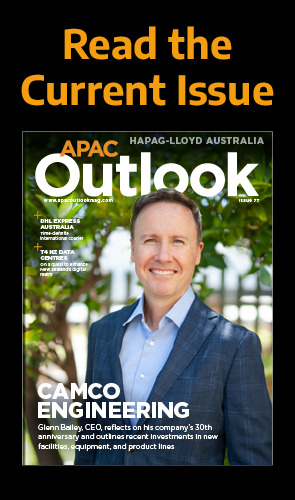GAMA Healthcare Australia : The Ward of Australia
Infection prevention has never been so critical. We speak to Suzanne Hammouche, CEO of GAMA Healthcare Australia, about the latest developments in the country’s healthcare space.
Medical Technology Association of Australia (MTAA) : Spotlight
As a national association, MTAA is the collective voice representing Australia’s dynamic MedTech industry, providing Australians with life-saving technologies. CEO Ian Burgess discusses MTAA’s mission, and paving the way forward for MedTech in Australia.
Luye Pharma : Mind Over Matter
Keeping Asia Pacific in good health, Andy Siow, Director for APAC at Luye Pharma, discusses addressing the mental health crisis and what makes the company a partner of choice.
Back in Motion Health Group : Healthcare Autonomy in Motion
For over 20 years, Back in Motion Health Group has catered to the wellness needs of Australians and New Zealanders. Founder and Group Director Jason T. Smith examines a holistic approach to allied health.
CR Surfacing Laboratories : Putting the Grouse in Glasses
Utilising a unique marketing strategy to engage the optical lens market, we take a look at CR Surfacing Laboratories and speak to the company’s Director, Adam Fletcher, about the latest in the industry.
Southern Community Laboratories : New Investment, New Zealand
Moving forward to meet an increasingly digitalised and consolidated healthcare sector, we take a look at Southern Community Laboratories and speak to Peter Gootjes, CEO, about the company’s latest developments.
Team Medical Supplies : Answering Critical Need
Team Medical Supplies (TMS) is driven by the goal of helping those who need it by delivering healthcare consumables and equipment to medical institutions across the vast footprint of Australia. We speak to the company’s executive team to learn more.
Pharmaceutical and Healthcare Association of the Philippines
For the past 75 years, the Pharmaceutical and Healthcare Association of the Philippines (PHAP) has been at the vanguard of improving the country’s healthcare sector. Executive Director Teodoro Padilla, examines the organisation today.
Star Pharmacy Group : Value in Healthcare
Delivering value-driven healthcare across Southern and Eastern Australia, Star Pharmacy are a group with growth on the horizon.
Vision Eye Institute : Envisioning a Bright Future
James Thiedeman, CEO at Vision Eye Institute, discusses his organisation’s position as a leading provider of ophthalmology in Australia.









































